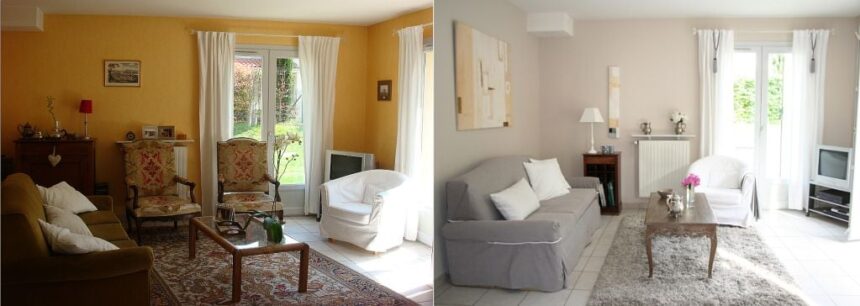When preparing your property for the market, how it’s presented can dramatically impact how quickly it sells — and at what price. Home staging has become a powerful tool for sellers looking to impress potential buyers. But one common dilemma remains: should you do the staging yourself, or bring in professional help?
While DIY staging is more affordable and flexible, professional staging offers expertise, resources, and a refined touch that can be hard to replicate. Both options have their pros and cons. The right approach depends on your budget, timeframe, and the condition of your home. In this blog, we’ll explore the differences and guide you to make the most informed decision.
Understanding the Basics of Home Staging
Home staging goes beyond cleaning or decorating. It’s the process of styling a property to appeal to a wide audience, highlighting its strengths and helping buyers envision themselves living there. From reconfiguring furniture to accessorising spaces and improving lighting, staging focuses on creating a lasting impression that draws buyers in.
Professional staging tends to be more strategic. A reputable home staging company has the expertise to present a home in line with current design trends and buyer expectations. They understand how to maximise space, light, and flow to make a home feel more inviting. On the other hand, DIY staging may rely more on personal taste and available resources, which could limit its impact if not executed carefully.
The Case for Professional Staging
Hiring a professional stager removes a great deal of stress from the selling process. These experts know how to target specific buyer demographics and style properties to suit different price points and neighbourhoods. For example, a family-sized home might be staged to showcase play areas, a cosy living room, and an organised home office, appealing to busy parents and remote workers alike.
Professional stagers also have access to high-quality furniture, artwork, lighting, and decorative accessories. If your home is vacant or has outdated décor, these resources can breathe new life into every room. A professional touch can help prospective buyers emotionally connect with the space, which is key to encouraging offers.
DIY Staging: A More Affordable Alternative?
DIY staging is a sensible option for those working within a tight budget or with a flair for interiors. By decluttering, deep cleaning, and adding a few fresh accessories, homeowners can make a property feel more appealing without spending too much. Neutralising rooms and removing personal items like family photos or bold artwork can help potential buyers better picture themselves living in the space.
While cost-effective, DIY staging does require time, effort, and a good sense of design. Sellers will need to be objective — a tough task when they’ve lived in a property for years. Additionally, you’ll need to assess what your target buyers are likely to want. A little research, inspiration from home magazines, and honest feedback from friends or agents can go a long way.
What Buyers Really Notice
Buyers are often influenced by a property’s feel within the first few minutes of viewing. They’re drawn to clean, light-filled spaces that feel functional and inviting. A well-staged property shows off its potential and helps viewers focus on layout, storage, and features, rather than being distracted by mess, clutter or outdated furnishings.
Both DIY and professional staging should aim to create clearly defined spaces. For example, a corner could be transformed into a reading nook with a comfy chair and lamp, or a small spare room staged as a nursery or study. Buyers are more likely to fall in love with a property when they can visualise how each room might serve their needs.
The Budget Breakdown
Budget plays a major role in deciding between DIY and professional staging. Professional services can range from £300 to several thousand pounds, depending on whether you’re hiring for a consultation, partial staging, or full property furnishing. While this may seem steep, the potential return on investment can outweigh the initial outlay — especially in competitive markets.
DIY staging is cheaper but may still involve some costs, such as renting a storage unit for excess furniture, buying fresh décor, or paying for professional cleaning. It’s important to view staging as an investment. Even spending a few hundred pounds to improve presentation can speed up the sale and reduce the chance of needing price reductions later on.
When DIY Makes Sense
DIY staging works particularly well when your property is already in good decorative condition. If you have stylish furniture, neutral walls, and a tidy layout, you may only need to make a few small adjustments to get the space ready for viewings. This might include adding fresh bedding, rearranging furniture for better flow, or adding soft touches like throws, cushions, and candles.
It’s also a good route for sellers with time and motivation. If you’re still living in the property and are willing to invest some effort, DIY can work well. Just be sure to remain objective and get second opinions. Sometimes, things we’ve grown used to — like a crowded hallway or bold feature wall — might put off a potential buyer.
When to Choose the Pros
Professional staging is especially valuable if your home is empty, cluttered, or outdated. Vacant properties can feel cold and uninviting, and buyers may struggle to grasp the scale of the rooms. A professional can furnish these spaces beautifully, helping buyers connect emotionally with the property.
It’s also worth considering professional staging if your home has been on the market for a while without success. A fresh approach can generate new interest and help reposition your property in buyers’ minds. And if you’re selling a high-value home or targeting a specific audience, the polish and expertise that professionals offer can elevate your marketing to a whole new level.
Hybrid Options: A Middle Ground?
Not sure whether to go full DIY or professional? A hybrid approach could be the answer. Some home staging professionals offer consultation-only services. They’ll visit your home, provide a detailed staging plan, and you can then carry it out yourself — saving money while benefiting from expert insight.
You could also choose to stage just a few key rooms professionally, such as the lounge, kitchen, and main bedroom, while managing the rest yourself. This targeted approach ensures your property’s most important spaces look their best, while still keeping costs manageable. Rental furniture and accessories are also available for short-term use, giving you flexibility without a full-service commitment.
Final Thoughts: What Works Best?
Ultimately, both DIY and professional staging can be effective when executed well. The best choice depends on your personal situation. DIY may be ideal for confident, budget-conscious sellers, while professional staging suits those aiming for a high-end presentation or lacking time and resources.
If you’re in doubt, start small. Declutter, clean thoroughly, and style a few rooms. Take test photos and see how your home compares to others online. If it still lacks impact, bringing in a professional might be the boost you need.
No matter which route you take, remember that staging isn’t just about style — it’s about creating a connection. When buyers walk through the door and feel “at home”, that’s when offers start coming in.


